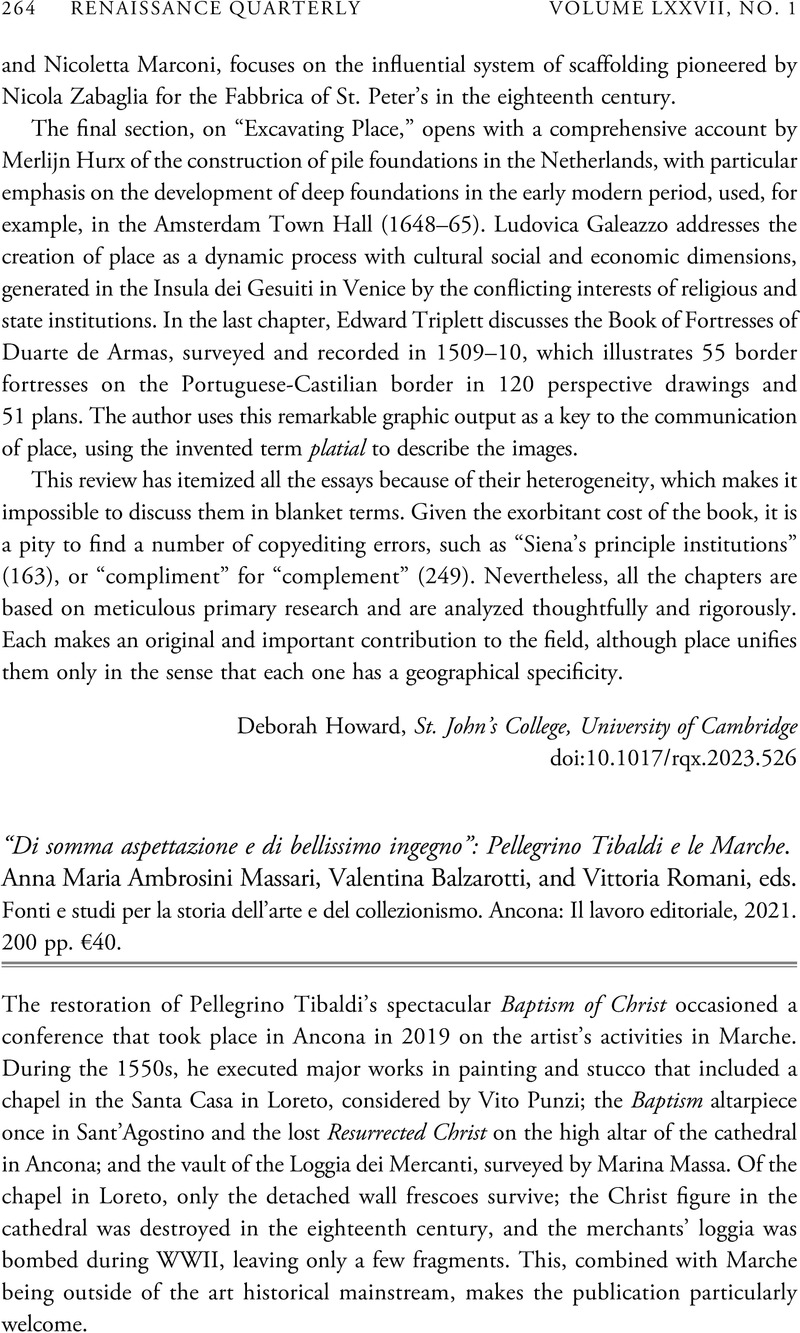No CrossRef data available.
Article contents
“Di somma aspettazione e di bellissimo ingegno”: Pellegrino Tibaldi e le Marche. Anna Maria Ambrosini Massari, Valentina Balzarotti, and Vittoria Romani, eds. Fonti e studi per la storia dell'arte e del collezionismo. Ancona: Il lavoro editoriale, 2021. 200 pp. €40.
Review products
“Di somma aspettazione e di bellissimo ingegno”: Pellegrino Tibaldi e le Marche. Anna Maria Ambrosini Massari, Valentina Balzarotti, and Vittoria Romani, eds. Fonti e studi per la storia dell'arte e del collezionismo. Ancona: Il lavoro editoriale, 2021. 200 pp. €40.
Published online by Cambridge University Press: 24 April 2024
Abstract
An abstract is not available for this content so a preview has been provided. Please use the Get access link above for information on how to access this content.

- Type
- Review
- Information
- Copyright
- Copyright © The Author(s), 2024. Published by Cambridge University Press on behalf of The Renaissance Society of America



